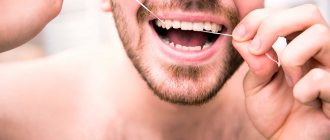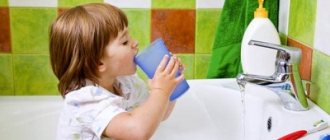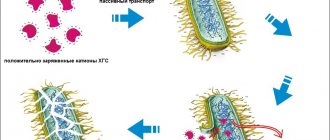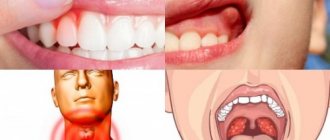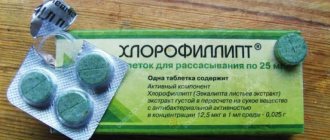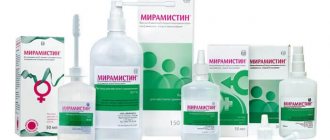Characteristics of Chlorhexidine
Chlorhexidine bigluconate is a drug with a pronounced antimicrobial, antiseptic and disinfectant effect. It is actively used in dentistry, gynecology, otolaryngology, dermatology, and urology. It is quite possible to be poisoned by Chlorhexidine, but not with the kind sold in pharmacies. This is a 0.05% aqueous solution, transparent, without a specific smell or taste. This Chlorhexidine is capable of killing bacteria on the skin and mucous membranes, and when taken orally it causes only mild signs of poisoning. Another thing is a 20% alcohol dilution, intended for the needs of medical departments. It is diluted locally to 0.5%, 1%, 5% for antiseptic wiping of surfaces and disinfection of instruments.
Important!
What special instructions are there for the use of Chlorhexidine? Gargling (instructions for using this product will be presented below) should be done with 0.2 or 0.5% solutions. To dilute the concentrated product, use distilled water, glycerin or alcohol. If you need to treat deep wounds or burn surfaces, then you need to make a sterile solution.
It should also be noted that the drug "Chlorhexidine" is able to maintain its activity even in the presence of organic substances or blood impurities. But it should not be allowed to come into contact with the mucous membranes of the eyes (with the exception of special dosage forms that are intended for washing them).
So, we looked at the drug "Chlorhexidine". Almost everyone knows how to gargle with this remedy. But not everyone knows that such a solution is incompatible with soap and detergents that contain an anionic group (sodium lauryl sulfate, saponins and sodium carboxymethylcellulose). It should also be noted that this medication can be used simultaneously with drugs containing a cationic group (benzalkonium chloride and cetrimonium bromide).
Causes of drug poisoning
Taking Chlorhexidine solution orally is strictly prohibited, but this method of use is used with alarming regularity. And it's not about suicide attempts at all. Fans of healthy lifestyle practice the method of treating various diseases in such an original and very dangerous way. It is not surprising that due to damage to the mucous membranes, pathologies that were previously mild in severity begin to progress and often recur.
Poisoning can also occur due to carelessness. This drug is often prescribed to treat the throat in the treatment of respiratory infections along with cough syrups and antibiotic suspensions. If you feel unwell, it is quite possible to mix up the bottles.
"Chlorhexidine" for the treatment of children and pregnant women
It is strictly forbidden to prescribe Chlorhexidine for the treatment of children under five years of age. This drug is suitable for children over seven years of age. But even in this case, the solution must be used with extreme caution, since the child may swallow it. Therefore, parents should carefully monitor the rinsing process.
In pregnant women, sore throat occurs more often than in other people. But they are highly discouraged from using Chlorhexidine solution to rinse their mouths. If you still cannot do without this drug, then all procedures can be carried out only after consultation with a doctor. In addition, Chlorhexidine is not recommended for use by nursing mothers, as well as by patients with hypersensitivity to the components of the drug.
Chlorhexidine solution is an excellent antiseptic and has good activity against various bacteria, viruses and fungi. But before you start using, you should read the instructions for use, and also carefully study the contraindications.
Symptoms of Chlorhexidine poisoning
Taking a concentrated alcohol solution is much more difficult for the body to tolerate than an aqueous solution. The main signs of such poisoning:
- attacks of nausea and vomiting;
- pain in the throat, epigastric region and abdomen, heartburn, sour belching;
- diarrhea or constipation;
- impaired coordination of movements;
- migraine-like headaches;
- tremor of the limbs, turning into convulsions;
- facial redness;
- drop in blood pressure;
- thready pulse.
When inhaling vapors, shortness of breath, a feeling of lack of air when inhaling, redness of the eyes, and dryness of the nasal mucosa occur. If first aid is not provided, the victim loses consciousness.
Characteristics of the drug and its properties
Chlorhexidine is an antiseptic with pronounced bactericidal properties, successfully used in medicine for more than 50 years. Has an active effect against protozoa, herpes and bacteria.
The substance can be released in the form:
- externally applied solution – 0.05% or 20%;
- gel;
- ointments;
- spray;
- candles.
The solutions are packaged in glass or polymer bottles with a volume of 100 ml or 500 ml. This is very convenient, since the polymer bottles are equipped with a cap, and in case of wounds or cuts outside the home, you can wash your hands with the drug directly from the bottle.
Chlorhexidine is used as:
- care after surgery;
- treatment of ulcers and burns;
- treatment of wounds, cracks and abrasions of the skin and mucous membranes;
- combating fungal and bacterial infections of the skin and mucous membranes;
- prophylactic agent in obstetrics and gynecology, urology;
- prevention of STDs;
- skin disinfectants;
- preparation for the treatment of dentures;
- substances for sanitation before diagnosis and treatment;
- means for sterilizing medical instruments;
- disinfectant for thermometers and surfaces;
- a preparation for treating the surgeon’s hands, the surgical field and the patient’s skin;
- means for the production of glycerin, alcohol or aqueous concentrates.
You can even gargle with the solution if you have a cold.
Thus, we see that chlorhexidine is widely used in obstetrics and gynecology, urology, dentistry, in the practice of otolaryngology and in surgical operations.
Symptoms of chlorhexidine poisoning occur when the substance enters the body
First aid for Chlorhexidine poisoning
If a person swallows Chlorhexidine while gargling, it is advisable to induce vomiting. To do this, you need to drink warm water or a slightly pink dilution of potassium permanganate, and then press your fingers on the root of the tongue. In case of poisoning, it is strictly forbidden to rinse the stomach after taking a concentrated alcohol solution . When it passes, it will burn the esophagus and mouth, causing serious breathing problems.
In this case, you need to call a doctor, and before he arrives, help the victim:
- give any fast-acting laxative, for example, magnesium sulfate, as well as enterosorbent - Polyphepan, activated carbon, Enterosgel;
- drink hot, sweet tea.
The arriving doctor decides what to do next. He examines an adult or child and, if necessary, hospitalizes him.
Is it possible to spray chlorhexidine down children's throats?
Yes, this drug is available not only in the form of a solution, but also as a spray or suppositories (vaginal). And, naturally, the question arises: is it possible to spray your throat with such a spray? After all, it’s much more convenient (especially when it comes to throat diseases). Let's think logically and sort everything out in order.
- Yes, the spray is really more practical in this matter. After all, they can reach much further. But, as a rule, it is used after rinsing. After we have washed away all the germs, we need to drop something in to soothe and give an additional healing effect. Now we are talking about other throat sprays.
- But! When we spray a spray down the throat, where does the liquid go? That's right, we swallow it. Even an adult will find it difficult to spit out the contents.
- Therefore, children under 12 years of age are strictly prohibited from spraying the spray. And for adults too. This drug is very concentrated and toxic, so it can damage the mucous membrane of the throat.
- In general, the spray has a direct purpose - it is the treatment of hands and surfaces.
We suggest you read: Wisdom teeth are growing - what to do, quick help
How to irrigate the throat with chlorhexidine:
- It is more convenient to perform this procedure using a syringe (without a needle) or a syringe.
- Yes, this procedure can be done for children. But, preferably, after five years. For small children there are a number of equally effective and less aggressive drugs.
- We dilute it to the concentration that we have already indicated above.
- Important! The child's head should be tilted forward, face down. This is done so that the liquid flows out easily.
- We remind you once again that the liquid must be warm. Firstly, this enhances the qualities of chlorhexidine. And secondly, for a sore throat there is nothing better than warm (not hot) water.
- It should be processed in the same way as in rinsing, for at least 30 seconds.
- And also do not consume food and water for 1.5-2 hours.
- A small recommendation - ask the child to carefully spit out the liquid, which, even in small doses, is present in the saliva!
Treatment of intoxication
The toxicity of Chlorhexidine is high only at high concentrations. In this case, the victim is hospitalized for further treatment in a hospital. There is no specific antidote that can neutralize the active ingredient, so therapy is aimed at eliminating the symptoms of poisoning.
The following clinical and pharmacological groups are used:
- enterosorbents;
- gastroprotectors;
- hepatoprotectors;
- regeneration stimulants.
For fluid loss with vomiting and diarrhea, treatment regimens include Hydrovit or Regidron. Their use allows you to replenish the reserves of essential macroelements. Severe poisoning requires intravenous administration of solutions of sodium chloride, Ringer, and glucose.
Areas of use
None of the routes of administration of chlogexedine involve oral administration. The drug is used exclusively externally or locally:
- when disinfecting surgical instruments and the hands of medical staff;
- for processing work surfaces;
- for emergency prevention of sexually transmitted diseases;
- as an adjuvant for urethritis and urethroprostatitis;
- for the treatment of burns, purulent-septic processes, abrasions and microcracks;
- as a prevention of dental diseases;
- in the treatment of ENT diseases.
In all these cases, an overdose of chlorhexedine, as a rule, is not observed.
Most often, solutions of chlorhexedine 0.05% are used for pharmacological purposes, and much less often - 0.02%. It can act as an active ingredient in ointments, suppositories, solutions and rinses for the mouth and throat.
In addition, when using a dental solution, you should adhere to certain rules:
- You should rinse your mouth after eating and after preventative brushing of your teeth.
- As a rule, 15-20 ml of solution is used per procedure.
- After use, the product should be spat out thoroughly.
- After rinsing, you should not drink water or eat food.
- Any manipulations in the mouth can be done 10-15 minutes after the procedure.
Such simple rules will help not only prolong the effect of the drug, but also protect against possible poisoning by the active substance.
Features of intoxication
If you drink Chlorhexidine in the form of 0.05% aqueous dilution, then, with a high degree of probability, signs of poisoning will arise due to self-hypnosis. Exceptions are children, old people, and weakened patients. An overdose is manifested by nausea, dizziness, mild peristalsis, lack of appetite, and drowsiness.
In children
In pediatrics, Chlorhexidine is used from birth to destroy germs and viruses. It is used to treat diaper rash, abrasions, wounds, cuts, and skin rashes of allergic origin. If 1-2 tablespoons are accidentally swallowed, a slight disturbance of peristalsis is noted. But a concentrated solution of the drug that enters the child’s stomach is poisonous. The famous pediatrician Komarovsky warns parents against self-medication for any poisoning. If Chlorhexidine solution enters the stomach, the child must be immediately taken to the intensive care unit.
During pregnancy and lactation
During the period of bearing a child, Chlorhexidine is prescribed to women for rinsing the throat, treating gums and teeth after visiting the dentist, and for otitis media for instillation in the ear. It quickly destroys pathogenic microorganisms without having a negative effect on the fetus. But during pregnancy, it is dangerous for a woman to come into contact with a 20% alcohol dilution of the drug, including its vapor. Its active substance is able to penetrate biological barriers, including placental ones.
I took chlorhexidine, what should I do?
Chlorhexidine bigluconate, the active ingredient of the drug, is a powerful antiseptic that destroys pathogens by destroying their cell membranes. Many pathogenic bacteria, fungi, protozoa and viruses are susceptible to the product. Chlorhexidine in the form of a solution is made on the basis of water or alcohol and can have different concentrations:
The amount of active substance in the drug can be reduced by diluting it with water, however, for use on mucous membranes and skin, the best option is a ready-made pharmaceutical solution in water 0.05%. It is used, according to the instructions, only locally and externally:
- for rinsing the mouth and throat;
- for douching (washing) of the vagina;
- for insertion into the urethra;
- for treating skin, including wounds and minor injuries.
It is contraindicated to use the solution if you are intolerant to chlorhexidine bigluconate or have inflammatory skin diseases (dermatitis). The drug is not contraindicated for pregnant women and children, but should be used with caution in minimal concentrations. Side effects when applied topically may include irritation and dryness.
What to do if “chlorhexidine” gets into the stomach?
Very often, while rinsing the mouth and throat, people swallow Chlorhexidine.
What to do if the solution gets inside the body? In this situation, you must immediately rinse your stomach with clean water and drink activated charcoal (1 tablet per 10 kg of person’s weight).
Instead of coal, you can use burnt magnesia. But before use, it should be diluted (2 tablespoons per 200 ml of clean water).
What happens if you take chlorhexidine?
Many people are interested in the question of what will happen if an adult takes Chlorhexidine, and also if a child accidentally swallows it? The fact is that Chlorhexidine is a universal antiseptic drug with a fairly wide range of applications. Since it belongs to the group of drugs, it must be used only in accordance with the attached instructions. Otherwise, intoxication of the body may occur. Let us consider such cases in more detail.
"chlorhexidine": description
"Chlorhexidine" is a universal drug; it is used in dermatology, otolaryngology, gynecology and dentistry. The active components of this antiseptic solution destroy the cell membrane of various microorganisms.
"Chlorhexidine" exhibits good activity against the herpes virus, yeast, dermatophytes, as well as pathogens of sexually transmitted infections. This antiseptic cleanses damaged skin well.
Chlorhexidine is available in several forms: solution, aerosol and gel.
Advantages of "Chlorhexidine":
- Low price.
- High activity against various microbes (much higher than that of Miramistin).
- Long-lasting action (after the rinsing procedure, a thin film remains on the teeth and mucous membrane, which has a long antiseptic effect).
We invite you to read Do you grind your teeth at night?
Disadvantages of Chlorhexidine:
- Has a bitter taste.
- Long-term use may cause temporary darkening of the surface of the tongue and teeth.
Indications for use:
- Disinfection of skin, treatment of wounds, burns and damaged surfaces.
- Preoperative hand treatment of medical staff.
- Disinfection of devices, equipment and work surfaces.
- Treatment of colpitis, bacterial vaginitis.
- In obstetrics and gynecology: prevention of various infectious complications (before abortion, childbirth, operations).
- Prevention of sexually transmitted infections (syphilis, gonorrhea, trichomoniasis, ureaplasma, chlamydia and others).
- Rinse the mouth and throat for periodontitis, stomatitis, and sore throat.
What happens if you swallow chlorhexidine?
As already mentioned, the drug is intended exclusively for local and external use. Accordingly, the answer to the question whether it is possible to swallow Chlorhexidine solution is negative.
Its active ingredient can negatively affect the composition of bacteria in the intestines, that is, provoke an imbalance of microflora - dysbiosis.
In addition, a concentrated or alcohol solution is dangerous for the mucous membrane, as it causes chemical burns.
If, as a result of rinsing the mouth or throat, Chlorhexidine still gets into the stomach, poisoning should be prevented:
- drink about a liter of warm water and induce vomiting;
- take the enterosorbent at hand - activated carbon, Smecta, Polysorb or any other;
- if rinsing does not help, seek help from a medical facility.
In the case when the child has swallowed the solution, gastric lavage is done with a smaller amount of water - two glasses are enough. The dose of enterosorbent required for a small patient is calculated according to his weight. For example, the number of activated carbon tablets should be at least 1 piece per 10 kg of body weight.
What happens if you drink a solution of Chlorhexidine depends on its concentration and quantity. There is often a question on the Internet about the consequences of a medicine accidentally swallowed while gargling.
Pregnant women and parents of young children are especially prone to panic. Since 0.05% is used for this purpose, that is, a weak solution of Chlorhexidine in water, there is no need to worry.
In addition, 2 tablespoons of the product are enough to rinse your throat or mouth, and one sip of Chlorhexidine is not dangerous.
It is necessary to rinse, take enterosorbents and consult a doctor if you accidentally swallowed a more concentrated solution or alcohol-based solution.
The procedure is also necessary if a lot of the drug was drunk (for example, a 0.05% drug was mistakenly washed down with the drug instead of water).
Otherwise, the consequences may be different: poisoning (nausea, vomiting, digestive disorders), dysbacteriosis, burns of the mucous membranes of the digestive system.
How often can you gargle with chlorhexidine?
If throat diseases occur very often, then you should definitely consult a doctor. Most likely, he will prescribe the necessary tests. It is possible that a bad bacteria has settled in the oral cavity, which releases spores and provokes illnesses, or it acts as a signal of another disease.
- Chlorhexidine must be handled very carefully. Do not exceed rinse time and medication concentration (as well as dosage).
- Do not use for more than 15 days!
- The minimum break between courses of treatment should be 1-2 months. And we have already stated that frequent viral diseases signal other problems (possibly with immunity).
- You can rinse 2-3 times a day (sometimes the doctor prescribes 4). In the first days of illness, you can rinse more often (every 3-4 hours).
- And we remind you once again - do not self-medicate! Only your attending physician, knowing all the tests and causes of the disease, can prescribe the correct dosage, regimen and duration of treatment.
When is the drug used?
It is better to buy a solution of Chlorhexidine for gargling in the form of a ready-made medicine of 0.05% concentration. A more concentrated drug must be diluted with distilled or boiled water to protect against burns to the mouth or an allergic reaction of the body.
Chlorhexidine bigluconate is a modern antiseptic with a fairly wide spectrum of action.
Contraindications
There are restrictions on use under which the drug is not prescribed. First of all, the contraindications of Chlorhexidine include individual intolerance to its components.
In addition, the following restrictions apply:
- Do not use the drug for dermatitis.
- It should not be used in surgery, especially before and after surgery on the nervous system.
- The product should not be mixed with other antiseptics.
- Not recommended for use in children under 7 years of age.
Is it possible for women to gargle with Chlorhexidine during pregnancy and lactation? It should be used with caution, despite the fact that the product is not absorbed into the bloodstream. The drug is used only with the permission of a specialist.
Contraindications for the use of chlorhexidine
There are not many of them:
- Hypersensitivity to individual components of the drug
- Avoid simultaneous use of Chlorhexidine when treating a throat with other antiseptics (for example, hydrogen peroxide)
Symptoms of intoxication
Each organism is individual; if even a small amount of chlorhexedine enters the digestive tract, the following symptoms may occur:
- nausea;
- headache;
- body aches;
- weakness, drowsiness;
- severe vomiting;
- increased body temperature;
- frequent bowel movements;
- loss of consciousness.
Of course, one sip of chlorhexedine solution should not prepare you for the worst. In most cases, adults do not experience any symptoms at all. However, if this substance was swallowed by a child, the picture may be much worse.
In children
in pediatrics, chlorhexidine is used from birth to destroy germs and viruses. It is used to treat diaper rash, abrasions, wounds, cuts, and skin rashes of allergic origin. if 1-2 tablespoons are accidentally swallowed, a slight disturbance of peristalsis is noted.
but a concentrated solution of the drug that enters the child’s stomach is poisonous. the famous pediatrician Komarovsky warns parents against self-medication in case of any poisoning. If the chlorhexidine solution enters the stomach, the child must be immediately taken to the intensive care unit.
Chlorhexidine: drug interactions
- The antiseptic makes microorganisms more sensitive to the antibiotic chloramphenicol, neomycin, kanamycin sulfate, and cephalosporins.
- You cannot use iodine preparations and chlorhexidine at the same time: they are incompatible.
- Before using a disinfectant, do not treat your skin with soap - this can lead to dermatitis and irritation.
- Ethyl alcohol, on the contrary, enhances the antimicrobial effect of chlorhexidine.
- The antiseptic makes microorganisms more sensitive to the antibiotic chloramphenicol, neomycin, kanamycin sulfate, and cephalosporins.
- You cannot use iodine preparations and chlorhexidine at the same time: they are incompatible.
- Before using a disinfectant, do not treat your skin with soap - this can lead to dermatitis and irritation.
- Ethyl alcohol, on the contrary, enhances the antimicrobial effect of chlorhexidine.
Source: https://imdent.ru/esli-khlorgeksidin-popal-v-zheludok/
Prevention and precautions
More often, poisoning is diagnosed in children, and not even the smallest ones. If the bottle is left in a visible place, then the child’s curiosity will always prevail over the parent’s prohibition from touching the medicine. Out of curiosity, a baby may swallow a product that does not have an unpleasant taste or odor. The drug should only be stored in a locked box. Poisoning also occurs when taking expired Chlorhexidine. Chemical reactions have already begun to occur in it, increasing its toxicity. It is imperative to monitor the expiration date of the drug.
Mouth rinses: indications
After opening the gums or removing a tooth.
In this case, the oral cavity is rinsed 3 times a day. Although it would be better to do baths, because active rinsing can lead to inflammation. After all, after a tooth is removed, a hole remains, and when rinsing, a blood clot may fall out of it and the inflammatory process will begin. If complications arise after tooth extraction, then rinsing, even in combination with antibiotics, is completely useless. In this case, you should immediately contact a dental surgeon who will debride the wound and apply medication.
For bleeding and inflammation of the gums.
Bleeding and swelling of the gums are clear signs of inflammation, which can be caused by tartar and microbial plaque on the teeth. Without removing the cause of inflammation, any treatment (ointments, gels, rinses) will be completely ineffective. Some improvement, of course, will appear, but the disease can progress completely unnoticed, which can lead to tooth mobility and other negative consequences.
For stomatitis.
“Chlorhexidine” shows quite good activity against the herpes virus, but still, for herpetic stomatitis, it is better to use the “Miramistin” solution. However, there are forms of stomatitis that are caused by bacteria. These include, for example, the aphthous form of stomatitis. In this case, Chlorhexidine solution will be an excellent addition to the main treatment. Rinse the mouth with the solution 2 times a day.
Pregnant women and nursing mothers can use the solution as a gargle, but only after consulting with their doctor.
With unauthorized and uncontrolled use of medicine during pregnancy, there is a risk of harm to the baby in the womb. During lactation, it is prohibited to treat the skin on the mammary glands with the drug.
The use of chlorhexidine is avoided if:
- Intolerance to the components of the drug.
- Otitis (chlorhexidine should not be allowed to come into contact with the eardrum to prevent the substance from reaching the auditory nerve).
- Dermatitis.
- Eye diseases (it is permissible to wash the eyes only with a special form of chlorhexidine, which is intended specifically for this manipulation).
Long-term use of chlorhexidine to treat the throat or mouth can cause:
- Headache.
- The appearance of an unpleasant aftertaste.
- Sleep problems.
- Darkening of tooth enamel.
- Dry mouth.
The use of this drug is widely used where it is necessary to maintain sterile cleanliness - this is the surgical site of the body (in other words, the field), the surgeon’s hands and his instruments. Of course, other doctors also treat their hands with chlorhexidine. It is perfect for washing purulent wounds and septic processes.
It is prescribed in the case of:
- purulent sore throat
- for the treatment of laryngitis
- and also pharyngitis
- especially if there is an acute or chronic form
- tonsillitis is also an indicator for the use of this medicine
- another symptom that is subject to similar treatment is tracheitis
- During the flu, ARVI or acute respiratory infections, gargling with chlorhexidine will be very useful
- nicotine effects can also be removed with similar treatment
Important! High temperatures increase the effects of chlorhexidine! Therefore, it is much more effective to use it in a warm state. The minimum temperature should be 22 °C, but not more than 40 °C.
- At too high temperatures, inflammatory processes can worsen even more, and at low temperatures, efficiency will decrease and vasoconstriction will occur.
The main form of release of the substance is 20%, but a less concentrated preparation is used for use. More suitable for gargling:
- A concentration of 0.05% is considered the most optimal because it does not require the addition of liquid;
- But, a solution of 0.1, 0.2 and 0.5% is also suitable. But in this case, you must strictly follow the instructions on how to breed them.
How to take:
- If you bought a ready-made 0.05% solution, then you do not need to dilute it for adults.
- The dosage should be no more than one tablespoon.
- The rinsing time should be at least 30 seconds, but not exceed 1 minute.
- The contents must be spat out.
- Of course, this procedure should be carried out after eating.
- And, it is advisable to rinse your mouth with warm water to remove any remaining food.
- The frequency of rinsing directly depends on the severity of the disease. Sometimes 2-3 times are enough, and with severe purulent inflammation, the number of rinses themselves can increase up to 4 times.
- The course of treatment is also an individual matter. On average, it lasts 7-14 days. If the condition improves, then you can stop such treatment.
- If the concentration of chlorhexidine is higher, then it must be diluted with boiled or distilled water.
- At a concentration of 0.1%, it must be diluted in a ratio of 1:2. That is, there is twice as much water.
- At a concentration of 0.2%, naturally, 1:4.
- And the 0.5% concentrate must be diluted in a ratio of 1:10.
On a note! Because it is very rare to prescribe a similar concentration for rinsing.
- A 1% solution should be diluted in a ratio of 1:20.
- 2% - in the amount of 1:50.
- Well, a 5% solution should be diluted in a ratio of 1:100.
Important! Do not self-medicate. Only your doctor can prescribe the correct dosage. After all, he is the one who knows your history and the extent of the disease. Sometimes, in severe forms of the disease, it is worth taking a higher concentration or increasing the frequency of rinsing.
DETAILS: Chlorhexidine instructions for use. Mouth rinse
A few recommendations:
- Do not combine treatment with hydrogen peroxide
- Do not combine treatment with Lugol's solution under any circumstances.
- Also, you should not combine this drug with iodine.
- Follow the instructions strictly
- Effective treatment is always only comprehensive (for any disease)
- Important! Do not eat or drink for 2 hours or at least 1.5 hours
- But ethanol (alcohol) enhances the effect of chlorhexidine
By the way! The solution must be warmed before use. If you dilute chlorhexidine with water, then you just need to take moderately warm water.
And one important nuance - if you leave chlorhexidine in an open state (diluted or not), after half an hour all its qualities will evaporate. Therefore, you need to prepare the drug immediately before rinsing.
Any medication should be given to children under 12 years of age with great caution, and under 6 years of age even more carefully. Of course, for children under one year old or even up to 2-3 years old, this method of treatment is out of the question. After all, they still don’t know how to gargle, and even more so, they may also forget to spit out the medicine.
- And the point is not only that they do not know how to properly handle such a drug. After all, even at the age of six, you need to monitor so that the baby does not swallow the medicine, and gargle enough time.
- The fact is that such a drug is considered a very strong antiseptic and, yes, copes well with inflammation. But! It can cause an allergic reaction (children simply have a more sensitive and receptive body), can provoke irritation and cause a burning sensation.
How to give chlorhexidine to children. If the doctor insists that it is necessary to use it for children under 2 years of age, then:
- It is better to wipe with a cotton swab dipped in a diluted solution.
- Be sure to make sure that you do not try to suck out liquid from the same tampon or try to swallow it
- To reduce this risk as much as possible, place the baby on his side (head facing straight) so that excess fluid can drain out easily.
- For children of any age (meaning up to 12 years old), only a 0.05% solution can be taken for gargling.
Some doctors do not recommend using a diluted drug because its effectiveness decreases. This means that it takes more time to kill all (well, or most) germs and bacteria.
And if you rinse for too long, then you may experience dry mouth and a burning sensation. Although a highly concentrated drug can cause these symptoms. Therefore, strictly follow your doctor's recommendations.
- Up to 6 years it is better to dilute it with boiled water in a ratio of 1:2
- Over 6 years old (and up to 12) you can slightly reduce the amount of water to a dosage of 1:1
- Just like adults, you need to carry out the procedure only after eating and, preferably, rinse your mouth to remove any leftover food.
- The maximum single dose is 1 tsp.
- You need to gargle (or simply wipe your mouth) in the morning and evening. If the child is older or the complexity of the disease requires it, the doctor may prescribe this operation 3 times a day. But for children this is the maximum!
- And, of course, do not eat for 1.5-2 hours. Drinking is also not advisable.
- It should be taken until the patient’s health improves permanently. In principle, a significant result is visible within a week.
Under no circumstances should you take it for more than 15 days! This applies to both children and adults. Although there are practically no cases of overdose, you should be careful:
- If itching or dry mouth occurs, be sure to notify your doctor. He may prescribe a different medicine or reduce the dosage.
- Also, a change in taste may be a signal of an overdose.
- If the enamel has changed color, you should also be wary.
- In some cases, tartar may develop.
- And if an allergic reaction occurs or dermatitis appears, then it is urgent to stop rinsing with chlorhexidine.
Why shouldn't you swallow chlorhexidine? - Why?
Chlorhexidine is one of the fairly common antiseptic and antibacterial agents, often used in dentistry, surgery and ENT practice.
But when it is prescribed to treat a child, parents are always interested in whether such a drug can be given to children, how and when chlorhexidine is used in childhood, and whether this drug can be dangerous for babies. The active substance of this medicine is chlorhexidine digluconate, which has the following effect on the child’s body:
- Antiseptic.
- Antibacterial.
- Painkiller.
- Anti-inflammatory.
After treating the affected area, chlorhexidine leaves a thin film on it, which has a disinfecting effect for a long time.
Pharmacies sell chlorhexidine in the form of:
- An aqueous solution with a concentration of 0.05%, 0.2%, 1%, 5% and 20%.
- Alcohol-based solution with a concentration of 0.5%.
- Spray with an alcohol solution with a concentration of 0.5%.
- Suppositories used for gynecological diseases.
In childhood, only aqueous solutions of this drug are used. For any manipulations, it is allowed to use a solution with a concentration of 0.05%, and if the concentration of the purchased solution is higher, it should be diluted with boiled water (cooled) or distilled water.
In the practice of ENT doctors, chlorhexidine is quite in demand. The drug is used for pain and inflammation in the throat, including purulent lesions. It is effective for sore throat, laryngitis, tonsillitis and pharyngitis.
The medicine is prescribed to children for the following procedures:
- Gargling. This procedure is especially often prescribed when a child develops a sore throat. Chlorhexidine reaches infected areas and affects them, despite the presence of pus, so this drug is also effective for purulent tonsillitis.
- Irrigation of the throat. To perform it, the child’s head is tilted face down over the sink, chlorhexidine is drawn into a syringe or into a syringe without a needle, then the neck is irrigated for thirty seconds so that the medicine gets onto the mucous membrane and then poured into the washbasin.
- Nasal rinsing. Chlorhexidine helps to quickly cure some types of runny nose and is safe for the nose, but is rarely used at home for rinsing. Parents prefer to resort to more proven means - saline solution and miramistin.
- Inhalations. The medicine is added to the nebulizer for procedures for inflammation of the upper respiratory tract.
Chlorhexidine is prescribed to children who have developed stomatitis (especially aphthous), since the drug reduces swelling and helps relieve inflammation in the oral cavity. Also, rinses and irrigations can be prescribed by the dentist for gum diseases (periodontitis, gingivitis) and for treating the oral cavity after tooth extraction.
Chlorhexidine, due to its antiseptic and antibacterial effects, has long shown its effectiveness against lesions of the skin and mucous membranes:
- Chlorhexidine is used to treat wounds on a child's skin (abrasions, cuts, burns) to reduce or prevent inflammation and infection by bacteria.
- The drug is often prescribed for rinsing the earlobes after they are pierced.
- For diaper rash in babies, this drug is not prescribed due to age restrictions on its use.
The use of chlorhexidine is avoided if:
- Intolerance to the components of the drug.
- Otitis (chlorhexidine should not be allowed to come into contact with the eardrum to prevent the substance from reaching the auditory nerve).
- Dermatitis.
- Eye diseases (it is permissible to wash the eyes only with a special form of chlorhexidine, which is intended specifically for this manipulation).
Long-term use of chlorhexidine to treat the throat or mouth can cause:
- Headache.
- The appearance of an unpleasant aftertaste.
- Sleep problems.
- Darkening of tooth enamel.
- Dry mouth.
The drug should not be combined with soap. If you confuse the concentration of the drug and use a more concentrated or undiluted solution in a child, this risks causing a burning sensation and a local allergic reaction. In rare cases, the use of chlorhexidine in any concentration causes an immediate allergic reaction in the child.
- Take a solution of chlorhexidine, the concentration of which is 0.05%, then dilute it 1 to 1 or 1 to 2 with warm water. If the child is over 12 years old, do not dilute the solution.
- Since a diluted or open medicine loses its properties in 30-40 minutes, prepare a portion of the solution for one procedure immediately before manipulation.
- First, the child should rinse the neck several times with just warm water.
- Next, he should take the prepared chlorhexidine solution in the amount of one tablespoon into his mouth and gargle for about 30-60 seconds.
- For sore throat, this rinse is performed twice in a row.
- After treatment, you should not eat or drink anything for 1-2 hours.
- Gargling is performed 2-3 times a day, and in case of severe sore throat - up to 4 times.
- Duration of use should not exceed 7 days.
Any child can accidentally swallow the drug during rinsing, so parents should know what to do in such a situation before the manipulation:
- Empty the stomach by giving the baby plenty of water and making the child vomit.
- Give your son or daughter activated carbon at the rate of 1 tablet per 10 kg of the child’s weight.
Source:
Is chlorhexidine poisoning possible and how to avoid it?
Chlorhexidine poisoning is not a very common occurrence due to the fact that most of it is used in small doses and in low concentrations.
Chlorhexidine is an antiseptic substance widely used in dental, gynecological, ENT, and other practices.
However, this is a drug, which means it has certain contraindications and side effects, and must be used strictly according to the instructions.
The medicine has different release forms
In this article we will talk about the properties of chlorhexidine, and also get acquainted with the methods of its use and the symptoms of poisoning with this substance. In addition, we will learn how to help with chlorhexidine poisoning.
Characteristics of the drug and its properties
Chlorhexidine is an antiseptic with pronounced bactericidal properties, successfully used in medicine for more than 50 years. Has an active effect against protozoa, herpes and bacteria.
The substance can be released in the form:
- externally applied solution – 0.05% or 20%;
- gel;
- ointments;
- spray;
- candles.
The solutions are packaged in glass or polymer bottles with a volume of 100 ml or 500 ml. This is very convenient, since the polymer bottles are equipped with a cap, and in case of wounds or cuts outside the home, you can wash your hands with the drug directly from the bottle.
Chlorhexidine is used as:
- care after surgery;
- treatment of ulcers and burns;
- treatment of wounds, cracks and abrasions of the skin and mucous membranes;
- combating fungal and bacterial infections of the skin and mucous membranes;
- prophylactic agent in obstetrics and gynecology, urology;
- prevention of STDs;
- skin disinfectants;
- preparation for the treatment of dentures;
- substances for sanitation before diagnosis and treatment;
- means for sterilizing medical instruments;
- disinfectant for thermometers and surfaces;
- a preparation for treating the surgeon’s hands, the surgical field and the patient’s skin;
- means for the production of glycerin, alcohol or aqueous concentrates.
You can even gargle with the solution if you have a cold.
Thus, we see that chlorhexidine is widely used in obstetrics and gynecology, urology, dentistry, in the practice of otolaryngology and in surgical operations.
Symptoms of chlorhexidine poisoning occur when the substance enters the body
Use of the drug and signs of poisoning
The drug is used in different ways, however, despite its high safety, the likelihood of poisoning occurs only when gargling or gargling. This most often occurs when chlorhexidine is accidentally ingested.
As a result, the following symptoms may occur:
- attacks of nausea and vomiting;
- discomfort in the stomach;
- a feeling of “tearing” in the throat - a consequence of a burn to the mucous membrane;
- temperature increase to 37-38 C;
- headache;
- feeling of lethargy and chills;
- increased sweating.
The effect of chlorhexidine on the body is strictly individual. In some cases, short-term loss of consciousness or increased excitability is possible; quite rarely, poisoning is accompanied by diarrhea.
Important! The drug is contraindicated for use in case of individual intolerance, as well as for dermatitis.
In dental and ENT practice, solutions with a concentration of 0.02% or 0.05% are most often used. It is recommended to rinse after eating, after brushing your teeth.
Note! It is not for nothing that the instructions state the importance of rinsing after eating. In case of accidental ingestion of the drug on a “full” stomach, the organ is already covered with food and the solution will not get inside. As a result, the solution reacts with food, and not with the mucous membranes of the gastrointestinal tract, and its concentration in the body decreases.
For one rinse, about 15-20 ml of solution is used, the duration of the procedure is on average 30 seconds. After rinsing for 15-20 minutes, you should not eat food or any liquids, or perform any manipulations in the oral cavity.
Providing assistance in case of poisoning
When providing assistance, there is one unspoken rule - do not panic. Panic can somewhat blur the true symptoms of poisoning. Typically, chlorhexidine poisoning does not require a doctor, as there are no life-threatening symptoms. However, if your health does not improve, it is still better to seek specialized help.
It is better if the victim is examined by a doctor
When using chlorhexidine orally, the first minutes are extremely important. Basic actions in case of poisoning include:
- Gastric lavage - drinking large amounts of water and artificially inducing vomiting. The annotation for the drug says that when it enters the body, the kidneys excrete it in an amount of 1%. Some people noticed that with every 0.5 liter of water consumed, the concentration of chlorhexidine in the body decreased noticeably. However, there are situations in which it is impossible to induce vomiting, for example, in case of diseases of the teeth and gums, when the likelihood of getting an infection or getting an acid burn is critical.
- Drink activated carbon. Fortunately, it can be found in any first aid kit, and if it is not available, the price of the drug in the pharmacy does not exceed 10 rubles per plate.
- The use of other medications, in particular sorbents and antacids, is allowed, but only in consultation with the doctor.
Source: https://kak-vse-ustroeno.ru/primety/pochemu-nelzya-glotat-hlorgeksidin.html
